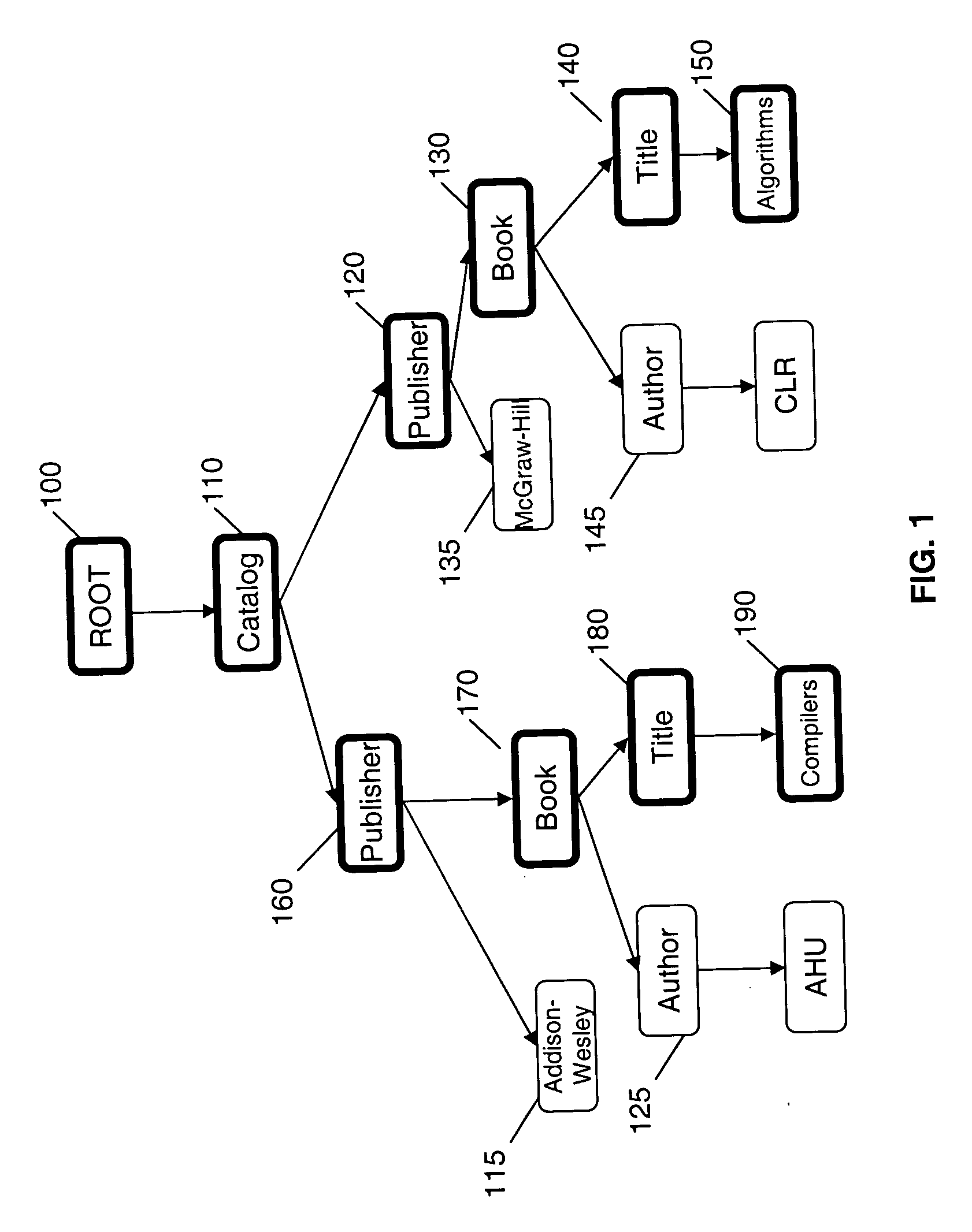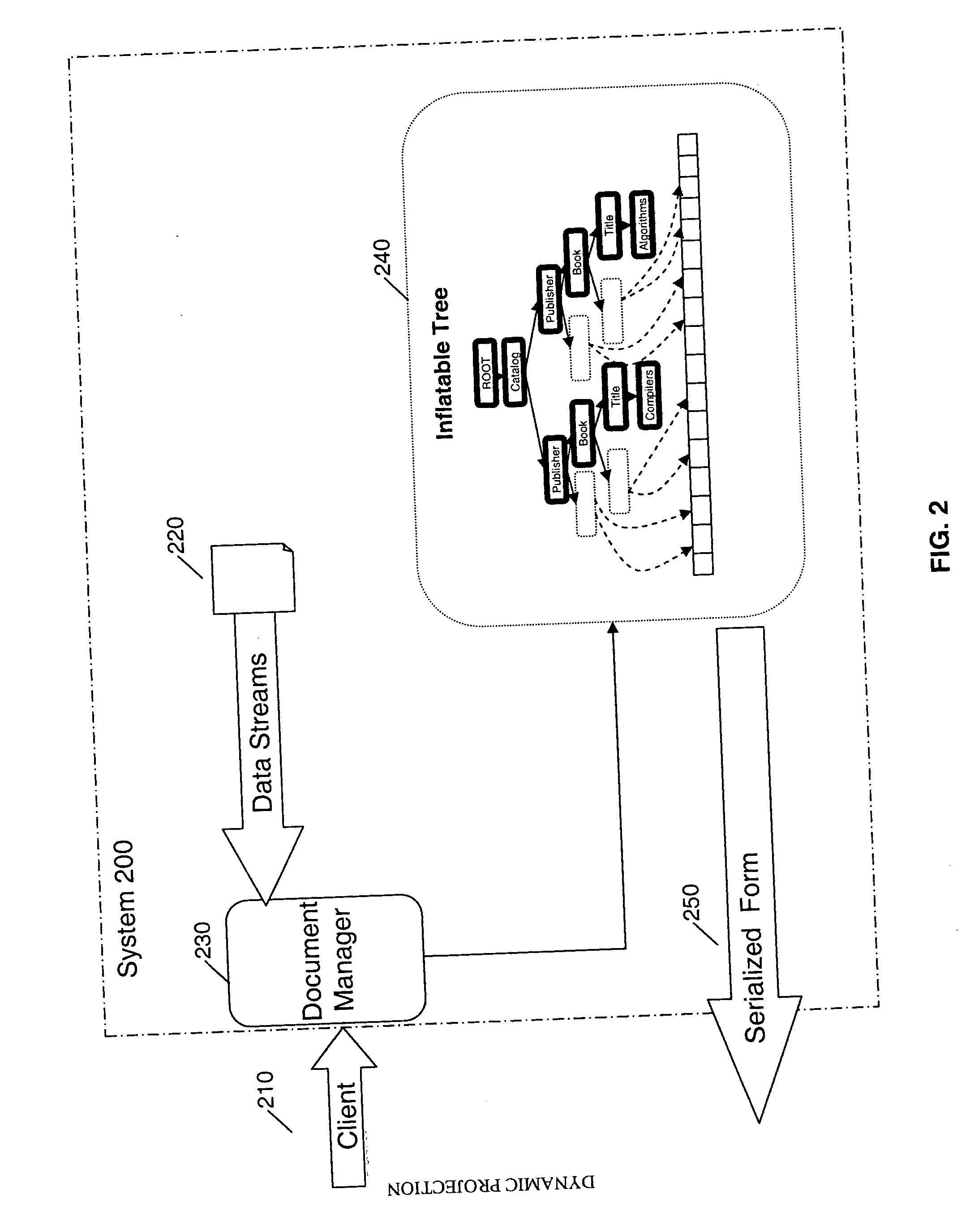Method and apparatus for lazy construction of XML documents
a document and lazy technology, applied in the field of information handling systems, can solve the problems of inability of xml processors prohibitively expensive time and memory, and inability to handle large documents, etc., and achieve the effect of improving the representation of hierarchical documents
- Summary
- Abstract
- Description
- Claims
- Application Information
AI Technical Summary
Problems solved by technology
Method used
Image
Examples
implementing embodiments
[0027] The system 200 may be implemented using a custom parser to generate the start and end element events corresponding to a depth-first traversal of a document. A key characteristic of the parser is the ability to support controlled parsing over a byte array—we can specify the start and end offsets of the byte array that the parser should use as the basis for parsing. This property is essential for the parsing of subtrees corresponding to inflatable nodes. Another feature of the parser is that at element event handlers, it provides offset information rather than materializing data as SAX does. For example, rather than constructing a string representation of the element tag's name, it returns an offset into the array and a length.
[0028] An embodiment of the present invention is implemented in Java, using the Xerces DOM representation as the underlying representation for the inflatable tree. Materialized nodes are represented as normal DOM nodes. Inflatable nodes have a special ta...
PUM
 Login to View More
Login to View More Abstract
Description
Claims
Application Information
 Login to View More
Login to View More - R&D
- Intellectual Property
- Life Sciences
- Materials
- Tech Scout
- Unparalleled Data Quality
- Higher Quality Content
- 60% Fewer Hallucinations
Browse by: Latest US Patents, China's latest patents, Technical Efficacy Thesaurus, Application Domain, Technology Topic, Popular Technical Reports.
© 2025 PatSnap. All rights reserved.Legal|Privacy policy|Modern Slavery Act Transparency Statement|Sitemap|About US| Contact US: help@patsnap.com



